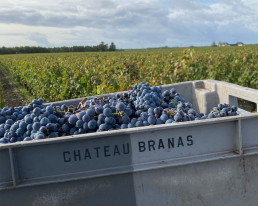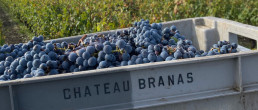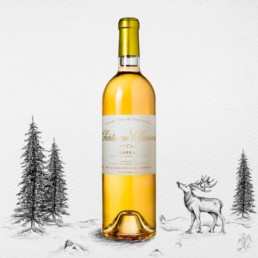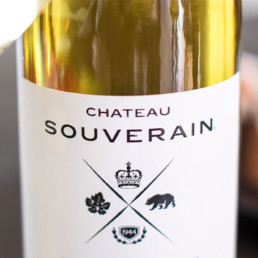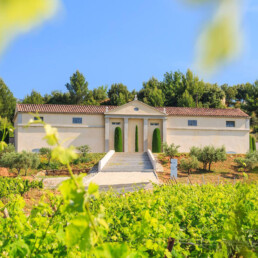“In Moulis-en-Médoc, you cannot go wrong with the high-performing Branas Grand Poujeaux, which, frankly, is cruising at Grand Cru Classé quality.”
– Neal Martin for Vinous
At Dhall & Nash, we pride ourselves on our unique sourcing method, which leads us to some incredible discoveries. Not just big names, but true hidden gems. We have recently brought on wines from a producer who perhaps demonstrates this in the clearest possible terms…
“Value hunters take notice—this soaring Château is poised to set a whole new benchmark for Moulis.”
– Lisa Perrotti-Brown
Château Branas Grand Poujeaux from the Moulis-en-Médoc region is the latest Bordeaux beauty to hit our shores and shelves and is what Wine Advocate’s Neal Martin have called, “one to watch.”
Let’s get right to it…
The Wines
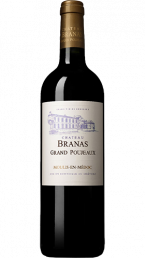
Château Branas Grand Poujeaux
AOC Moulis-en-Médoc 2020
- 60% Merlot, 35% Cabernet Sauvignon, 5% Petit Verdot
- 60% new French oak, 40% second-fill French oak
- Consultant: Hubert de Boüard of Château Angélus
93 Points “Scoring at the top of the range, due to all of the freshness and vibrance in the sweet, plums and cherries, the tannins are soft, polished and elegant, giving you the opportunity to enjoy all the chocolate, plums and sweet, spicy, earthy, ripe fruits in the finish. Drink from 2023-2040.”
– Jeff Leve for The Wine Cellar Insider
“From 2018 onwards, the wines deliver richness with a solid backbone of beautifully ripe, remarkably soft tannins. These are delicious wines in youth, also possessing solid 20-year+ cellaring potential. I especially love how these recent vintages embrace the elegance and freshness of Moulis combined with purity, definition, and remarkable intensity. Having toured the impressive new vineyard holdings with Arjen last year, quality will likely continue on this upward trajectory. Value hunters take notice—this soaring Château is poised to set a whole new benchmark for Moulis.”
– Lisa Perrotti Brown for The Wine Independent
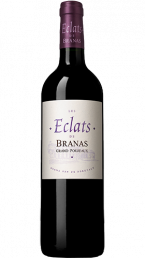
Château Branas Grand Poujeaux
Les Eclats de Branas AOC Moulis-en-Médoc 2016
- 50% Merlot, 50% Cabernet Sauvignon
- Vibrating sorting table, double manual sorting, no crushing, filling of tanks by gravity.
- Consultant: Hubert de Boüard of Château Angélus
“A very harmonious second wine: complex nose of very ripe red fruits, notes of cinnamon, sweet flowers, flattering palate, with a tasty grain, fruit and good persistence.”
– Bettane & Desseauve
92 Points “The blackberry and chocolate aromas are impressive with plenty of hazelnuts, too. A hint of wet earth. Full body, firm and chewy tannins and a long, flavorful finish. Shows panache and interest. Better after 2022.“
– James Suckling
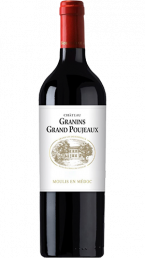
Château Granins Grand Poujeaux
AOC Moulis-en-Médoc 2021
- A neighbouring property on the Grand Poujeaux plateau – Château Granins – was purchased by Château Branas following the retirement of the owner in 2020. It was decided to keep their name.
- 60% Merlot, 30% Cabernet Sauvignon, 10% Petit Verdot
- 10 months aging: 30% aged in new French oak barrels, 40% in second fill, 30% in 3rd fill barrels
92 Points “Medium-bodied with fine, supple tannins. Clear and focused with blackberry, blackcurrant, thyme and crushed-stone notes. Fresh and mineral at the end.”
– James Suckling
Moulis-en-Médoc
Moulis-en-Médoc on the Left Bank is a narrow ribbon stretching 7 km from east to west and is an underrated appellation, often overshadowed by its other Médoc neighbours Margaux to the south and Pauillac and Saint Julien to the north, but this isn’t necessarily a case of ‘worst house on the best street,’ it’s more ‘secret hideaway of deliciousness’.
Moulis-en-Médoc, often just called ‘Moulis’, exclusively produces red wines from six permitted varieties: merlot, cabernet sauvignon, cabernet franc, malbec, petit verdot and carménère.
Château Branas Grand Poujeaux enjoys a 17-hectare terroir centered around the ancient gravel sediments of the Grand Poujeaux plateau, on the most eastern side of the appellation, planted to 50% Merlot, 45% Cabernet Sauvignon and 5% Petit Verdot.
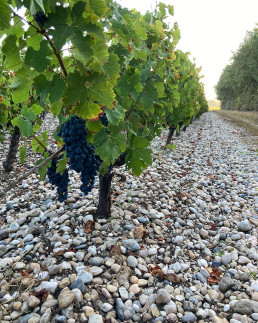
The Grand Poujeaux plateau offers among the best terroirs of Bordeaux. In terms of geology, the soils are Garonne gravel from the Gunz period with underlying Saint Estephe calcareous sediments (the same as the First growth terroir in Pauillac and Margaux.) This is the “insider secret”.
These poor and generous gravelly soils both provide excellent natural drainage and encourage deep rooting of the vines revealing the complexity of the different layers of the terroir.
Château Branas Grand Poujeaux

The history of the Château does go back a long time, but surprisingly little is known about it before this century. References point to the Dubuc family having owned it in the 1940s, and then Jacques de Pourquéry was at the fore, but 2002 was the real mark of the modern ‘beginning’ for this estate’s good name.
It was shortly after the turn of the century that Justin Onclin, aware of the potential of this terroir, bought Château Branas Grand Poujeaux with the vision of revitalizing the estate.
Justin was the successful founder of a Bordeaux wine merchant and the general manager of Château Prieuré-Lichine. It was this core knowledge and position that led him to make the jump when he heard about a plateau a few kilometers north of Margaux, called Grand Poujeaux with Günzian deep gravel mixed with clay, limestone and sandy layers – and he knew this little piece of earth was bound for greatness.
““I wanted the work of rehabilitating the Château to be both a restoration of the existing structure and the creation of a symbol of our quest for excellence.”
– Justin Onclin
Neal Martin for Vinous spoke to the director about the history of the estate’s beginnings during this time, and explained “Onclin purchased the old ‘chai’ of Branas, the vineyards, and two small buildings for the machines. The château building itself was occupied by the former owner’s mother, and years later, it was purchased by Thomas Burke, commercial manager at Château Margaux. A few years after the purchase of Branas, Justin Onclin bought the old estate house located next to the chai that had been owned by the former proprietors of Poujeaux. The building dates from 1777 and the winery from 1778 – evidence of the farming history on the Grand Poujeaux plateau. It is said that the Moulis appellation was home to the first historical vineyards in the Médoc, long before Dutch engineers helped drain the famous gravel plateaus of Pauillac, Saint-Julien, Saint-Estèphe, Moulis and Margaux.”
Justin, along with Carmen Onclin-Paqueron, has systematically replanted the vineyards and renovated the winery, including installing a brand new gravity-fed cellar. They also brought on consultant Michel Rolland – a celebrated Bordeaux oenologist before in 2006, Stéphane Derenoncourt took over consulting. (This is a fun drawback to our Levantene wines, as Stéphane works with Domaine de Bargylus in Syria and with Château Marsyas in Lebanon.)
Stéphane completed 6 years with Château Branas Grand Poujeaux before Hubert de Boüard of Château Angélus came on in 2012, and he remains to this day.
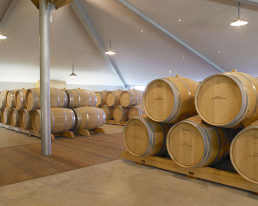
“The estate’s style is rich and dramatic, framed by a generous but nicely integrated patina of new oak that mark these out as among the more impactful wines in Moulis.”
– William Kelley for The Wine Advocate
In 2018, one Arjen Pen came aboard. After a number of successful ventures he was looking for a new challenge and wanted to invest in a real promising up-and-comer.
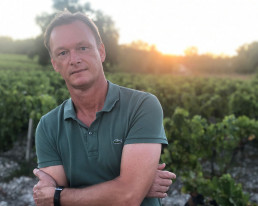
“I started looking for an investment in a promising vineyard, pushed by a friend and former shareholder of Château Richelieu, Hindrik Gommer,” Arjen explained to Neal Martin in Vinous, “I was introduced to Justin Onclin, who had accepted that his children were not interested in taking over the wine estates on the Left and Right banks of Bordeaux. Hindrik and I had the opportunity to become a partner in Branas Grand Poujeaux, and at the same time we brought in and merged the neighboring Château Granins Grand Poujeaux. This estate had belonged to the Bodin-Batailley family, whose only son was living in Amsterdam with no desire to return to France and take over the family business.”
This has proven to be a fantastic line up of improvements, with the château receiving more and more acclaim. This is summed up nicely by Lisa Perrotti-Brown for The Wine Independent, “Arjen Pen and I tasted the vintages from 2009 to the most recently bottled 2020. The evolution in style and quality is subtle yet clear. From 2018 onwards, the wines deliver richness with a solid backbone of beautifully ripe, remarkably soft tannins. These are delicious wines in youth, also possessing solid 20-year+ cellaring potential. I especially love how these recent vintages embrace the elegance and freshness of Moulis combined with purity, definition, and remarkable intensity. Having toured the impressive new vineyard holdings with Arjen last year, quality will likely continue on this upward trajectory. Value hunters take notice—this soaring Château is poised to set a whole new benchmark for Moulis.”
